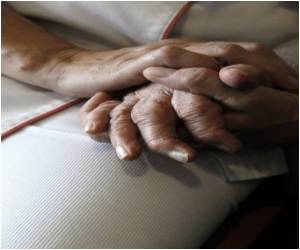Refuting a hypothesis in science can be as important as proving one, more evidently in research meant at clarifying how diseases continue with a view toward preventing, treating or curing them. Such a discovery can save scientists from spending precious years of effort exploring a dead end. In a study published in the
Proceedings of the National Academy of Sciences, Munich-based researchers refute a widely accepted hypothesis about a causative step in neurodegenerative conditions. These results deal specifically with animal models of human amyotrophic lateral sclerosis (ALS, aka Lou Gehrig’s disease) but also raise questions for research on other neurodegenerative diseases, such as Alzheimer’s or Huntington’s disease.
One of the ways neurodegenerative diseases manifest themselves is in the loss of axons – essentially, the transmission lines for electrical signals in individual nerve cells – and synapses, the key sites for communication between them. In the past, such damage has been attributed to deficits in the bidirectional transport of organelles, such as the intracellular power plants called mitochondria, along the axons of nerve cells. Now, researchers at the Technische Universitaet Muenchen (TUM) and Ludwig-Maximilians-Universitaet Muenchen (LMU) have put that assumption under the microscope in the most thorough test to date. They used novel imaging techniques to observe changes in both axon morphology and organelle transport – with high resolution in both space and time – in several different animal models of ALS. Their results show that transport deficits and axon degeneration can develop independently, refuting the hypothesis that one is a direct cause of the other.
The lead researchers in this study were Prof. Thomas Misgeld of the TUM Institute of Neuroscience, a Fellow of the TUM Institute for Advanced Study, and Prof. Martin Kerschensteiner of the LMU Institute of Clinical Neuroimmunology. Together with Misgeld’s research group, they observed axonal organelle transport in living tissue in real time – and in a way that enabled them to track the movement of individual mitochondria – using a novel imaging approach that involves transgenic labeling. They were also able to observe transport of another kind of organelle, endosome-derived vesicles. Several different animal models of ALS were investigated, all of which are based on human mutations associated with the disease.
Source-Eurekalert











